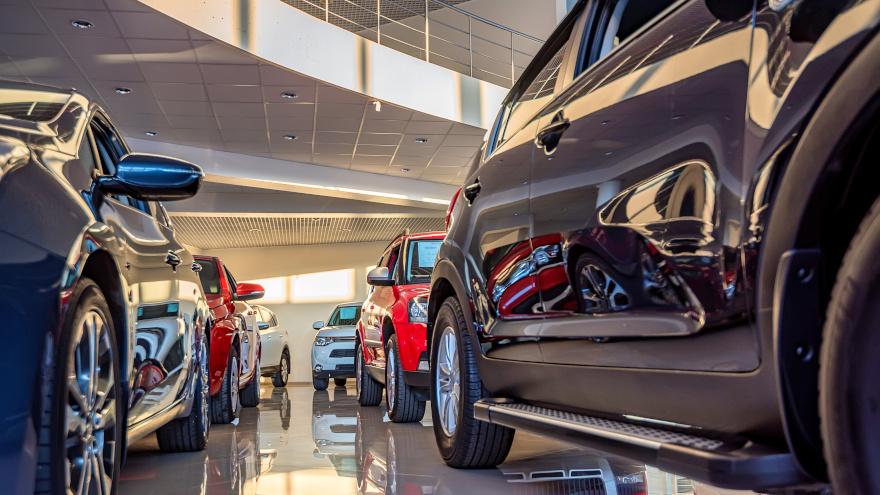COMMENTARY: Sale-leaseback in automotive retail & unlocking capital without losing control

By subscribing, you agree to receive communications from Auto Remarketing and our partners in accordance with our Privacy Policy. We may share your information with select partners and sponsors who may contact you about their products and services. You may unsubscribe at any time.
In today’s automotive retail environment, staying competitive often requires significant capital investments, whether acquiring additional rooftops, investing in new technologies, or upgrading facilities to meet evolving OEM requirements.
At Mach10 Automotive, we’re often asked how to best leverage real estate assets when the topic of expansion comes up.
To fund expansion without taking on new debt or diluting ownership, more dealers are turning to “sale-leasebacks,” a smart way to free up capital tied to real estate while maintaining operational control.
In this article, I am going to take a close look at the sale-leaseback model, which has been actively and passionately discussed across our industry media and LinkedIn of late. I will explain what a sale-leaseback is and outline the associated benefits and risks, as well as what a principal should consider before entering into a sale-leaseback agreement.
What Is a sale-leaseback?
A sale-leaseback enables a dealership to sell its real estate to a third-party investor or real estate investment trust (REIT), then lease it back under a long-term agreement. The dealership continues to operate at the same location but no longer owns the property, unlocking liquidity without disrupting operations.
Typically, these agreements are structured as triple-net leases, where the dealer covers property taxes, insurance, and maintenance. Lease terms often span 15 to 20 years and typically include renewal options to ensure long-term continuity.
Subscribe to Auto Remarketing to stay informed and stay ahead.
By subscribing, you agree to receive communications from Auto Remarketing and our partners in accordance with our Privacy Policy. We may share your information with select partners and sponsors who may contact you about their products and services. You may unsubscribe at any time.
Buyers may include private investors, real estate funds, or REITs specializing in automotive properties. For example, firms such as Legacy Automotive Capital acquire a dealership’s real estate and lease it back to the operators. These entities view dealerships as attractive, stable tenants due to their high revenue potential and need for a physical presence.
Why dealerships consider sale-leasebacks
Liquidity without debt: Sale-leasebacks offer immediate capital without increasing debt or diluting ownership. For many dealers, real estate is among the largest and least-utilized assets on the balance sheet. This approach turns equity into usable growth capital.
Fuel for expansion: Many dealership groups pursuing aggressive growth strategies use sale-leaseback proceeds to acquire new stores or upgrade existing facilities to meet OEM standards, without coming out of pocket. In a consolidating market, unlocking capital efficiently provides a competitive edge.
Succession and estate planning: For family-owned dealerships preparing for generational transitions, separating real estate from operations can simplify succession, provide estate liquidity, and reduce future internal conflicts without a need to sell the blue sky.
Attractive to investors: Institutional investors and private equity firms often prefer cleaner structures where real estate is separate from operations. A sale-leaseback can make a dealership more appealing and easier to value.
Key benefits of a sale-leaseback strategy
Financial flexibility: Selling the real estate and leasing it back allows dealers to redeploy that capital in higher-return areas such as technology, service operations, marketing, and market expansion.
Operational focus: Running a dealership is fundamentally an operating business, not a real estate play.
Capital efficiency: Especially in high-value urban or suburban markets, dealership real estate is consistently undervalued for top performing stores. Sale-leaseback providers educated on the new car market will pay 10-30% above appraised value for the top performing dealership properties, allowing a dealer to accelerate future appreciation to today. By converting future appreciation into immediate working capital, dealers can generate far greater ROI.
Flexibility in buy-sell strategy: Sale-leaseback capital extends an incoming dealer’s purchasing power, expanding the list of stores a dealer can purchase while also expanding the buyer pool for a seller.
If a sale is on the horizon, separating the operating business from the real estate can simplify the sale, offering buyers the option to acquire the operations alone without the added capital requirement associated with the real estate property acquisition.
Risks and liabilities to consider
Loss of ownership control: Selling the property means forfeiting future appreciation. Additionally, lease terms may limit future flexibility or improvements.
Fixed cost burden: If not structured appropriately, lease obligations become a fixed cost regardless of business performance. This can strain cash flow during downturns if not properly managed.
Reinvestment risk: Access to capital is only part of the equation. Without a disciplined reinvestment strategy, the benefits of a sale-leaseback can be undermined.
Lease renewal & termination risks: Some lease agreements may permit significant rent increases or contain termination clauses. Negotiating favorable, protective lease terms upfront is crucial.
What to consider before pursuing a sale-leaseback
Timing and valuation: Is the current real estate market strong? Are you selling at a favorable time aligned with your strategic goals?
Stability: Can your business comfortably service the lease obligations over the long term?
Capital allocation plan: Do you have a clear, ROI-driven strategy for reinvesting proceeds?
Legal and tax structuring: Consult with experienced advisors to ensure the structure is optimized for your tax, estate, and operating objectives.
Long-term business goals: Are you planning to hold, grow, or exit the business in the next 5–10 years? How does this move align with that strategy?
Ideal use-cases
Multi-store groups seeking capital to fund acquisitions.
Operators needing to renovate or relocate for OEM compliance.
Family-owned dealerships preparing for generational succession or estate transitions.
Dealers seeking to reduce personal exposure to real estate market fluctuations.
Right of first refusal (ROFR) transactions where dealers have an immediate liquidity need.
I asked Austin Wolfington, partner at Legacy Automotive Capital, to share his take on the trend that sale-leasebacks are increasingly being explored by dealer principals:
“Sale-leaseback capital is becoming an increasingly popular tool in dealership transactions – unlocking real estate equity and reducing, or even eliminating, out-of-pocket costs for acquisitions, partner buyouts, working capital, and image upgrades. It enhances purchasing power and preserves liquidity, enabling growth without added debt or the need to sell valuable blue-sky-assets.”
While a sale-leaseback strategy may not be the right fit for every dealer, it is gaining traction among dealer principals seeking smart, strategic ways to access capital. Unlike traditional financing, which can be slow and encumbered by rigid lending criteria, a sale-leaseback provides liquidity without the typical bureaucracy associated with bank loans or equity dilution. But beyond the capital itself, what sets this approach apart is the relationship it fosters between the dealership and the investment firm.
Unlike a conventional lender, the sale-leaseback partner has a vested interest in the long-term success of the dealership. This landlord-tenant dynamic goes beyond transactional; it creates a mutually beneficial alignment where both parties are incentivized to see the business thrive. In effect, the investor becomes a strategic ally with “skin in the game”, not just a financier.
For dealer principals with a clear growth vision and the right advisory support, a well-structured sale-leaseback offers more than just access to capital — it creates a pathway to strategic expansion, operational flexibility, and a lasting partnership aligned with long-term success.
George Pero is an accomplished leader in the automotive industry. George began his career in the automotive retail sector, where he held various management positions. George’s career achievements include successfully launching, operating, and selling Auctions In Motion (AIM), a regional mobile auction company that brings the auction to the dealer. George has extensive knowledge and expertise in mergers and acquisitions in the automotive sector, having overseen more than $1 billion in transactions. His sales and general management experience coupled with his success in M&A activities led George to establish Mach10 Automotive, a dealer advisory firm offering a suite of services to include dealer performance improvement, succession planning, and M&A.


